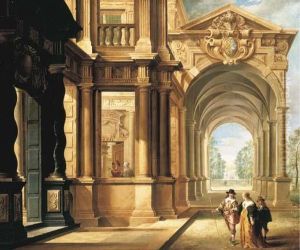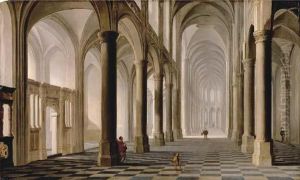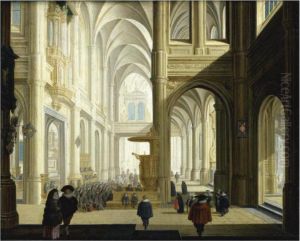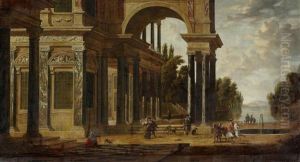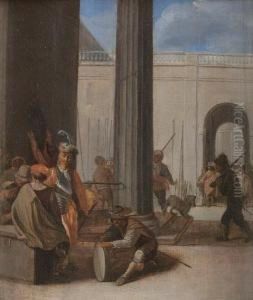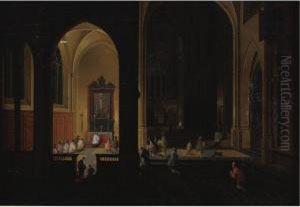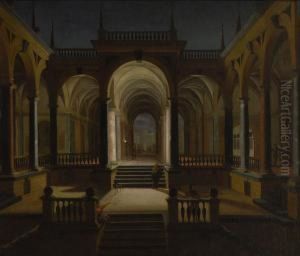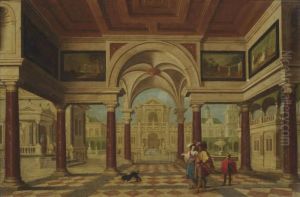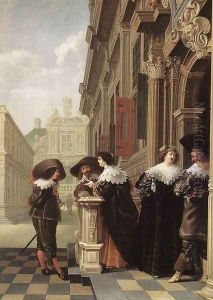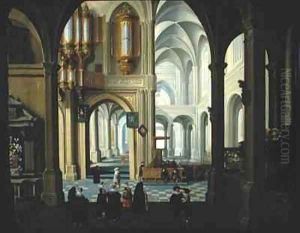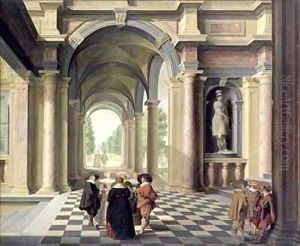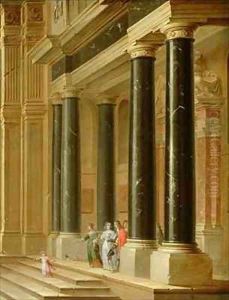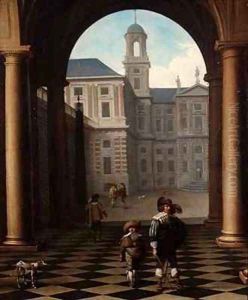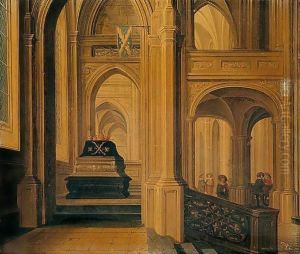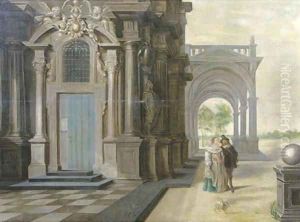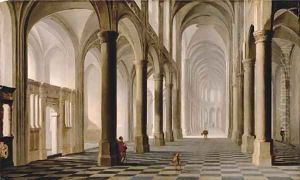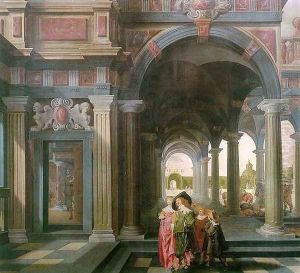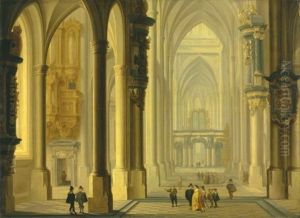Dirck Van Delen Paintings
Dirck van Delen, a Dutch painter, was born in 1605 in Heusden, in the Netherlands. He is particularly renowned for his architectural paintings, usually featuring grand and elaborate interiors of churches and palaces, often embellished with numerous figures. Van Delen's work is characterized by a strong use of perspective and a keen attention to detail, which brought the architectural elements in his paintings to life.
Van Delen received his artistic training in the city of Arnemuiden, where he became a master in the painter's guild in 1626. He was influenced by the works of other Dutch and Flemish artists, such as Hendrick Aerts and Hans Vredeman de Vries, who were also known for their architectural paintings. Van Delen's own style, however, was distinctive for its clarity and the use of light to create depth and volume in his compositions.
Throughout his career, van Delen collaborated with other painters, who often added figures to his architectural settings. This was a common practice among Dutch artists of the time, who would specialize in different subjects. His works were well received and he was a successful artist during his lifetime. Van Delen became a member of the Middelburg painter's guild in 1635 and served as its dean in later years. His art found a significant following and was collected by the affluent and the nobility of his time.
Dirck van Delen's paintings are considered an important part of the Dutch Golden Age of painting. Today, his works are housed in various museums and art collections around the world, admired for their beauty and historical significance in illustrating the grandeur of the 17th-century Dutch interior design and architecture. Van Delen's legacy as an artist lies in his ability to merge architectural precision with the lively atmosphere of the day-to-day, providing a window into the Dutch society of his era.
He lived a long and productive life, continuing to paint until his death in 1671. His work remains a subject of interest for art historians and enthusiasts alike, who seek to understand the complexities and nuances of Dutch Baroque art.

